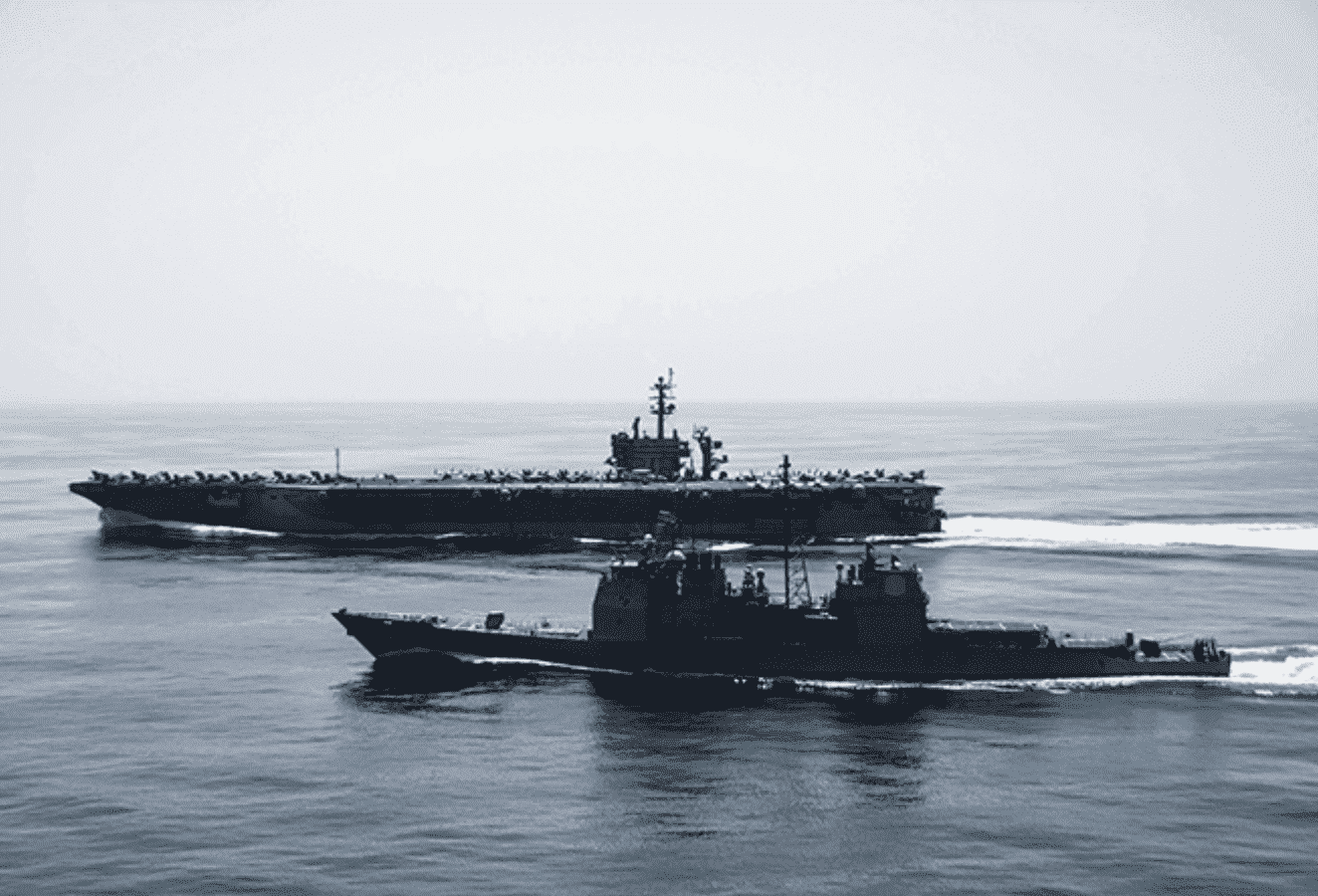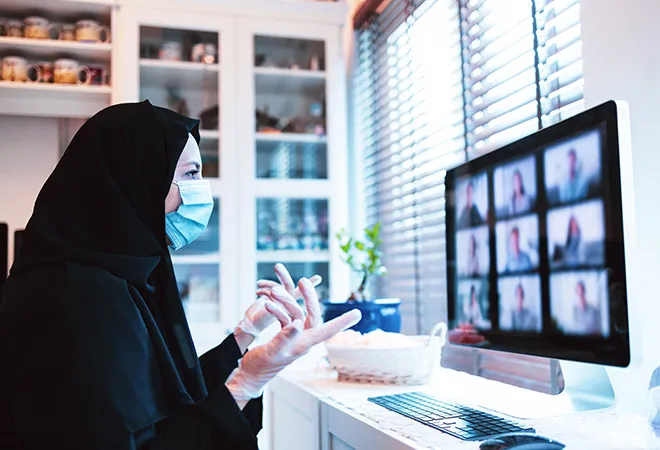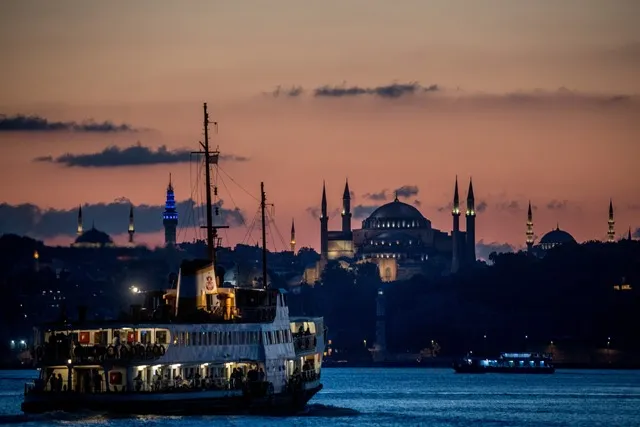The Chinese People’s Liberation Army Navy (PLAN), Russian Navy and the Islamic Republic of Iran Navy (NEDAJA) held the Marine Security Belt, a trilateral maritime exercise covering 17,000 square kilometres across the Gulf of Oman and the northern Indian Ocean Region (IOR) on 27-30 December. The naval exercise, involving in-port exchange and on-shore maritime exercise had 14 vessels. It included the PLAN’s guided-missile destroyer Xining (Hull 117), the Russian Baltic Fleet’s Neustrashimyy-class frigate “Yaroslav Mudry” (Hull 727), and NEDAJA’s frigate Alborz (Hull 72). According to Iran Navy’s deputy commander Rear Admiral Gholamreza Tahani, the trilateral exercise – the first-ever such large-scale naval exercise in the region involving major powers since the 1979 Islamic Revolution victory in Iran – primarily centered on anti-piracy and counter-terrorism tactics.
The trilateral exercise – which is now upgraded to be an annual feature – not just signalled growing maritime cooperation and coherence in naval strategies among China-Russia-Iran, but also served as a clear geopolitical message to the United States and its allies of an emerging new regional maritime alliance in the region. Although China and Russia downplayed the geopolitical significance amid regional maritime tensions in official transcripts, Tehran projected the trilateral exercise as a counter to the US presence in the region. The exercise demonstrates the three countries’ convergence in the perception of maritime threats and geopolitical interests, which if sustains over the long-term, may result in the rise of an Iran-centered Russia and China-backed collective security framework in the region. In the past, Iran, Russia and China have individually pronounced on multiple international platforms their intention to establish such a framework.
At the 74th United Nations General Assembly (UNGA) in September, Iranian President Hassan Rouhani announced Hormuz Peace Endeavour (HOPE) to promote peace and enhance maritime security in the Strait of Hormuz. Over 21-million barrels of oil a day or one-third of global sea-traded oil pass through the 167 kilometre-long Strait of Hormuz that separates the Gulf of Oman and the Persian Gulf. HOPE strives to realise a Hormuz Strait Community (HSC) summit to engage on a comprehensive set of regional security and cooperation issues and eventually actualise the withdrawal of US troops and its allies from the region that are considered to be threating the existence of Iran.
Earlier, in July, Russian president’s special envoy for the Middle East and African countries and Deputy Foreign Minister Mikhail Bogdanov too had affirmed Moscow’s Collective Security Concept for the Persian Gulf Region. The Russian framework emphasises, “inclusive regional security” by involving all the regional countries “on the basis of equality” to ensure maritime security and maintain peace, “for all nations” in the region, which exemplifies an attempt to fortify international and regional players diplomatic resolve against exclusive US-led coalition’s maritime operations in the region. Nevertheless, Moscow’s proposed inclusive plan to involve extra-regional partners including the US along with the EU, China, India and others in addition to Gulf regional states is a mere diplomatic ploy to demonstrate its intent to uphold multilateral frameworks against alleged US’ unilateral actions in the region. The mention of basic equality in the Russian framework further invokes basic tenets of multilateral consultations that Tehran alleges to be missing in the US-led operations across the region.
Subsequently, Beijing too welcomed Moscow’s proposal and emphasised its universal security vision for Gulf region through “common, comprehensive, cooperative and sustainable security” by developing “friendly relations on the basis of mutual respect and non-interference” in internal affairs. Beijing’s chorus with Moscow on collective security in the Persian Gulf epitomises the gradually emerging convergence between the Cold War communist rivals, especially following President Trump’s 2017 National Security Strategy that marks Beijing and Moscow as twin revisionist powers challenging the US-led international order and eroding US interests.
A Brewing Zero-Sum Game
The trilateral exercise in the Gulf of Oman and northern IOR gain greater significance as the waters along Iranian border are poised to witness escalated maritime tensions, following President Trump’s withdrawal from Joint Comprehensive Plan of Action (JCPOA) in May 2018. Trump administration’s subsequent unilateral sanctions as part of its “maximum pressure” strategy against oil-centered Iran’s economy cornered Tehran. Against such a backdrop, set-aside the potential, the China-Russia-Iran joint naval drill in its current form itself served as a counterbalance to the US interests in the region. Further, the trilateral exercise demonstrated that any nation could not be isolated in a multipolar world with national interests as divergent as the US driving the west on one side and the gradually evolving Russia-China convergence on the other.
Following the US killing of the Islamic Revolutionary Guard Corps’ (IRGC) Quds Force General Qasem Soleimani early in January 2020, Tehran is liable to uptick its military cooperation, especially naval exchanges, with like-minded regional and extra-regional countries. To safeguard territorial sovereignty and political integrity, Tehran hones all its diplomatic and strategic forces to weaken the US presence in the region, especially the US-led International Maritime Security Construct (IMSC) that ensures freedom of navigation and safe passage through the Persian Gulf, the Gulf of Oman and Bab el-Mandeb. The IMSC, which is considered as “undesirable security arrangement” in the region by Tehran, highlights the divided west over the security alliance. While the United Kingdom and Australia embrace the US-led IMSC, Japan and France have chosen to remain independent with their respective “survey and research” activities and European Union alternative.
With Iran’s geographic-regional advantage, China’s subtle diplomatic-economic influence and Russia’s strategic-military superiority, the divided west acts as an impetus to expand the trilateral platform, beyond the regional states to actively promote the anti-US campaign in the region. Such inclinations were resonated in Chinese Foreign Minister Wang Yi and his Iranian counterpart Mohammad Javad Zarif’s joint statement that hyphenates Beijing-Tehran in opposing unilateralism and upholding multilateralism against “bullies”, without any reference to the US, on 31 December in Beijing.
In-line with their intention to counterbalance the US beyond the Gulf region, namely in the Indo-pacific region, the current geopolitical conditions appear to be fertile for China and Russia to gradually build sub-regional alliances and quasi-partnerships with a long-term motivation to balance US-led Indo-Pacific strategy. In addition to the China-Russia-Iran trilateral, the Chinese and Russian strategic intent and motivation are manifested in their unprecedented joint naval drill with South Africa trilateral. The trilateral “Mosi” was held in waters adjacent to Cape Town to build a multilateral task force that counters security threats in the southern tip of Africa on 24-29 November. The two first-ever trilateral with Iran in the northern IOR and South Africa in the western IOR in a of one month demonstrate the resolve and coordinated efforts of Beijing and Moscow to challenge the US-led Indo-Pacific order by stepping up military-to-military naval cooperation.
Implications for India
Despite Indian media’s modest coverage on the four-day trilateral naval exercise, the event signifies a surge in the tempo of military exchanges between China and littoral states in the IOR. The exercises in the far seas demonstrate Beijing’s blue-water navy capabilities to protect China’s exponentially expanding energy, economic and strategic interests under President Xi Jinping’s Belt and Road Initiative (BRI) around the world. In addition, the ongoing sixth China-Pakistan naval exercise, Sea Guardians-2020, in the north Arabian Sea on 6-14 January informs China’s expanding military-centric coalitions beyond its economic and foreign policy centric coalitions.
Although Beijing denies the naval exercises’ link with the regional situation, China’s aims to maximise geopolitical gains in the wake of tensions between Iran and the US. The trilateral exercise hosting PLAN from Iran’s southeastern port city of Chabahar in the Gulf of Oman and BRI’s long-term agenda of enhancing Beijing’s holistic maritime power by building naval assets and developing a broader marine economy across IOR imperils India’s regional interests.
Despite India’s access to Oman’s strategic Duqm Port for military use and logistical support, the significant disruptions to the Indian energy sector that imports two-thirds of oil through the Strait of Hormuz due to a potential US-Iran conflict in the region creates a dilemma among the policymakers on New Delhi’s Raisina Hill. The dilemma emerges primarily to traverse the complex Iran-US conflict, while it is advisable that India optimises Japan’s approach to maintain the balance of power by establishing an independent task force in the region to safeguard the free flow of oilers headed towards India. The US sanctions and China’s expanding cooperation with Iran challenges India’s energy security and its diplomatic-economic investments in the Chabahar port that ensures land-based access to Central Asia through Afghanistan.












